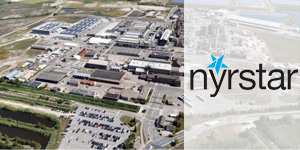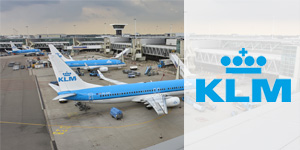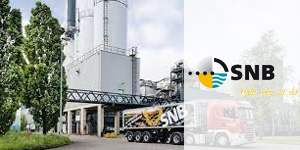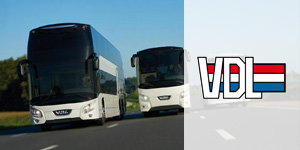Converters for home, work, transport and industry
Converters can be found everywhere: at home, in commercial workplaces or in industrial environments. Examples of converter usage include applications in mobile equipment (mobile phones and laptops), LED lighting, transport (car, metro, train) solar panels and production machines. A converter is an electrical or electromechanical device purpose-built to convert specific electrical characteristics (voltage, current, frequency) at the input to different values at the output.
Sectors and areas in which converters are used include (wharf) cranes, steel companies, cable manufacturers (extruders), welding machines, robots, LV industrial networks (chemical plants, paper factories, automobile industry), data centers and hospitals.

Examples of converter usage
Different types of converters
There are different types of converters, the operating according to different methods. For example: some converters convert AC voltage to DC voltage and vice versa. Other possible functionalities include changing voltage level or voltage frequency. Combinations of these different transformations are also possible. This means many options and types exist, as well as a very wide range of applications such as electrical machine control, light drives, active power filters, renewable energy conversion, energy storage systems and energy generation and distribution. Available converter power levels vary from microelectronics to high-voltage power transmission. There are also devices and methods available for converting between power systems designed for single and three-phase operation.
Classification of converter types
We can distinguish four categories of converters, based on source input voltage and output voltage.
- AC to DC converter, or ‘rectifier’
- DC to AC converter, or ‘inverter’
- AC to AC frequency converter, or ‘transformer’
- DC to DC voltage, or ‘current converter’
AC naar DC omvormers – Gelijkrichters
This inverter converts the AC supply to a DC supply for the load, or in other words, the inverter turns an AC voltage into a DC voltage. The essential components in this rectifier are: a transformer, switching unit, a filter and a control block.
We distinguish 2 types of rectifiers:
This type of rectifier contains diodes and converts the alternating voltage of the network into a fixed direct voltage. Because diodes are uncontrollable components (which do not require triggering), these converters are also referred to as uncontrolled rectifiers, as they produce a fixed voltage. The input voltage can be single-phase or three-phase.
This type of rectifier contains thyristors instead of diodes and converts alternating network voltage into a variable direct voltage. These rectifiers are also called phase-controlled rectifiers. Their operation is comparable to that of uncontrolled rectifiers. The difference is the fact that the uncontrolled diodes have been replaced by thyristors such as SCRs. Unlike diodes, thyristors can be controlled by triggering them at desired times to vary the output voltage.

DC to AC converters – Inverters
DC to AC converters are devices that convert DC input voltage to AC output voltage. The output voltage of the inverter can be a variable or fixed AC voltage with variable or fixed frequency. These types of inverters can be either single-phase or three-phase inverters, depending on the supply voltage.
AC to AC converters – Frequency converter
AC to AC converters are mainly used to convert the frequency of the input voltage/current from the source to desired load level. Some of these converters can also control the magnitude of the voltage as well as frequency. These are mainly used for adjusting the speed of AC drives and for induction heating. A transformer is a good example of an AC to AC converter. The input voltage is AC, the output voltage is AC, only the level of the voltage may vary between input and output. In addition, owing to its natural characteristics, a transformer ensures galvanic isolation in most cases (no direct electrical connection between input and output).
There are three types of AC/AC converter:
Cycloconverters are used to convert the frequency of a power supply to a desired load frequency. These converters are mainly used in high power applications – up to tens of megawatts – for frequency reduction. Cycloconverter applications include high-power AC drives, propulsion systems, high-frequency induction heating and synchronous motors in shipping.
Matrix converters offer a large number of frequency conversion options. They are built using fully controlled static devices, usually with bi-directional switches. When using these switches in three-phase matrix converters, any phase of the load can be connected to any phase of the input source.
This is the most modern and common type of inverter. In this inverter, DC is first rectified (AC-DC) and then changed to AC.
This type of inverter is widely used when greater control is needed, for example when controlling motors or pumps. The output of this type of inverter is completely independent of the input: both frequency amplitude and phase are freely adjustable.
Instead of using a conventional setup, in which AC-DC is made by diodes, an Active Front End (AFE) can also be used.
An AFE replaces the diodes with switching elements. An advantage of this is the fact that there is hardly any harmonic current at the input circuit. Reactive power is also drastically reduced. However, there is the risk of Supraharmonics.
Another advantage of the AFE is its ability to process bi-directional energy. This means that in addition to supplying energy, the AFE can also supply energy back. As a result, no large resistors are needed to process the regenerated energy. Costs are also reduced because the energy is fed back into the grid.
DC to DC converters
DC to DC converters are devices that convert a DC input voltage to a desired DC output voltage level. This type of converter consists of power electronic switching devices, such as thyristors, connected in such a way that they supply the required DC voltage to the load.
There are two main types of DC-DC converter:
- Isolation converters: a transformer in between the input and the output eliminates the DC path and adds a layer of security during conversion
- Non-isolation converters: these feature a DC path between input and output
In many industrial applications, a DC-DC converter is required to convert a fixed-voltage DC source into a variable-voltage DC source. These applications include ship lifts, forklifts, subways, control in large DC motors and traction motor control in electric cars.







